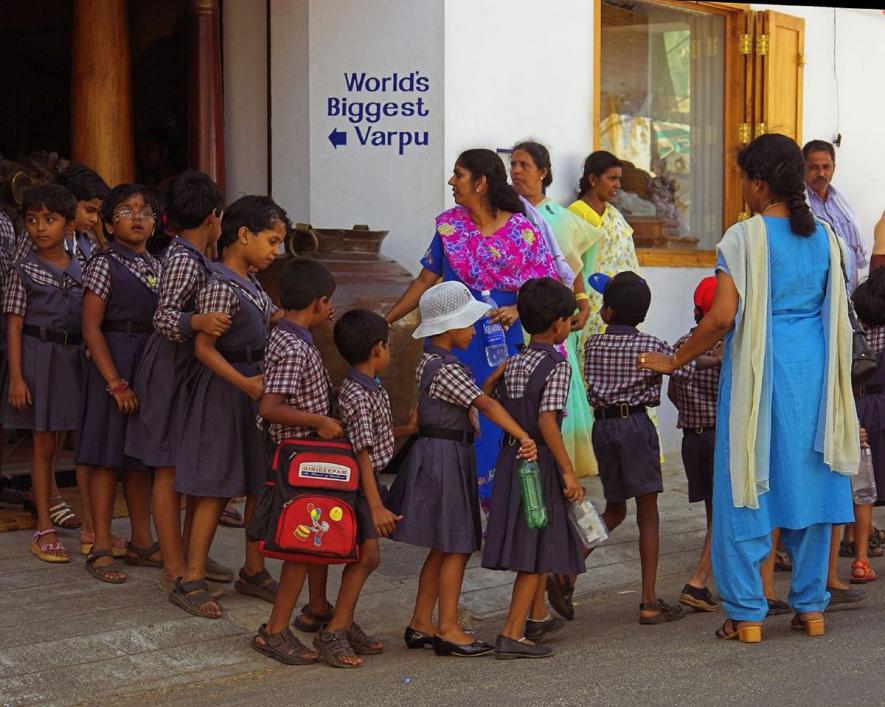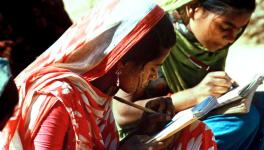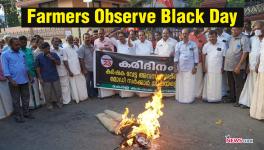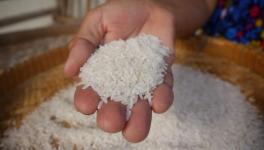Kerala Tops Gender Parity Index, Ranks Third in Gross Enrolment Ratio Among States

Image Courtesy: Wikimedia Commons
Kerala topped the list of states in the country on the Gender Parity Index (GPI) with 1.52 per the report of the All India Survey on Higher Education (AISHE) for 2020-21, conducted by the Ministry of Education.
With 50 colleges/lakh eligible population (age group of 18-23), the state is ranked joint third along with Himachal Pradesh, behind Karnataka (62) and Telangana(51). The state occupies the 10th position (1,448 colleges) among states and UTs with a higher number of colleges.
The state has a higher Gross Enrolment Ratio (GER) of 43.2, the third best among the states and sixth among state and Union territories (UT), much higher than the national average of 27.3.
The GER of students belonging to the scheduled castes (SC) and scheduled tribes (ST) communities are higher than the national average in Kerala.
The state has continuously achieved in the higher education sector, despite claims of students leaving the state for education outside the state and country.
The GPI of 1.52, implying the enrolment of 150 female students for 100 male students, is the highest in the country among the states. Even better is the GPI among the students from the SC community, with 1.91. The GPI among the ST students also remains healthy at 1.52. Gujarat ranks the lowest GPI with 0.87, while 29 states and UT have a GPI of more than or equal to 1.
The GPI has slightly increased from 0.98 in 2016-17 to 1.05 in 2020-21 at the national level, while it increased from 1.47 to 1.52 in Kerala over the same period. The GPI for SC and ST students has also increased during the same period from 0.96 to 1.07 and 0.88 to 1.02 at the national level.
The GER among the students from all categories in Kerala is estimated at 43.2, with the male ratio being 34.5 and females accounting for 52.3. Only Chandigarh (77) and Puducherry (61.1), both UTs rank above Kerala in female GER.
The GER among the SC students is 33.7 (male 23.4 and female 44.6), while the same is 29.1 (male 23.1 and female 35.1) among the ST students. Both ratios are higher than the national average of 23.1 and 18.9 among the SC and ST students, respectively.
The southern states of Tamil Nadu, Kerala, Andhra Pradesh, Karnataka and Telangana are among the top 10 states with the highest GER, while Bihar, Jharkhand, Assam, Chhattisgarh, Odisha, West Bengal, Gujarat, and Uttar Pradesh are the states with low GER.
Kerala, Chhattisgarh, West Bengal, Assam, Uttarakhand, Telangana and Tamil Nadu have a higher enrolment of female students than male students, with Kerala recording the highest gap between female and male enrolments.
The higher enrolment of female students in higher education is reflected in the number of female teachers in the state. While male teachers account for 57.1% across the country, Kerala, Punjab, Chandigarh, Goa, Meghalaya, Nagaland, Delhi, Haryana and Lakshadweep have more female teachers.
Bigger states like Maharashtra, West Bengal Uttar Pradesh, Madhya Pradesh and Rajasthan have a much lower number of colleges/eligible population. Kerala is ranked third with 50 colleges/one lakh eligible population and 10th with 1,448 colleges. The national average of the number of colleges/lakh eligible population is 31.
The Left Democratic Front (LDF) government has announced menstrual holidays and maternity leave for eligible female students to ensure the retention rate in higher education institutions.
The 11th AISHE report was published based on the data submitted by 1,099 universities, 41,600 colleges and 10,307 standalone institutions.
Get the latest reports & analysis with people's perspective on Protests, movements & deep analytical videos, discussions of the current affairs in your Telegram app. Subscribe to NewsClick's Telegram channel & get Real-Time updates on stories, as they get published on our website.
























